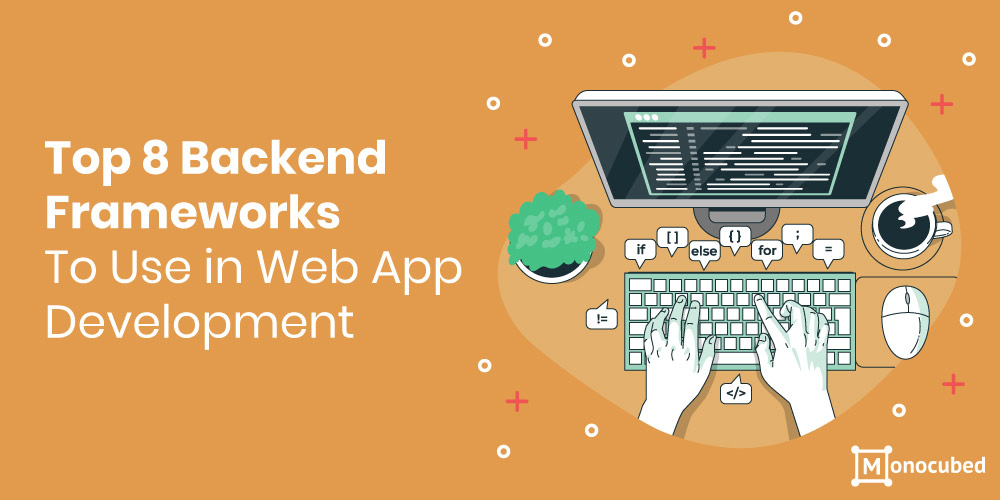The advancement in technology has brought immense innovation in mobile and web applications. Companies aim to deliver valuable output to their customers by incorporating the most used frameworks, libraries, and tools.
Frameworks are considered a vital part of developing interactive web apps. While the frontend takes care of the user experience, the backend is what facilitates an application to function.
Backend frameworks are the libraries of server-side languages that aid in building the server configuration of any website. It is essential to use the right technology for developing websites or you can seriously affect your application usage.
VTo help you, we present the 8 top backend frameworks for efficient backend web development of websites.
Table of Content
Best Backend Frameworks
In a hurry? Here are the top back end frameworks for different server-side programming languages
- Python – Django, Flask
- JavaScript – Express.js, Spring
- PHP – Laravel, CakePHP
- Ruby – Ruby on Rails
- Elixir – Phoenix
The video showcases the evaluation of the most popular backend development frameworks and their growth over the years. We will discuss the features and use cases of these top 8 frameworks in this blog.
What is a Web Application Framework?
A web app framework is a software tool that is intended to facilitate and support web application development which includes web resources, services, and web APIs.
They offer a specific way to form and install web applications on the World Wide Web.
The frameworks aspire to mechanize the overhead linked with general activities performed in the development of the web. For instance, they supply libraries for templating, database access, and session management; also they frequently endorse code reuse.
Even though they are aimed at the development of vibrant websites, they are appropriate for some static websites too.
Key Features
The best frameworks for web development generally place the control flow of the program and enable the users to ‘hook into’ that flow by divulging in diverse events.
Such an ‘inversion of control’ pattern is meant to be a crucial principle of a framework and benefits the coding by implementing a universal flow for the team to customize in similar conducts.
After knowing what is a web framework is, let us examine some critical features that aid experienced developers in web app development.
Web template system:
This is a collection of diverse software and methodologies reinforced to form and deploy web pages. The template engines are utilized to execute these web templates. They are termed as a tool for web publishing.
Modern Applications:
Modern web applications are sustained by robust web development tools. The most universal and one of the best frameworks for building applications facilitates the creation of all-purpose websites, forums, blogs, content management systems, to name a few.
Web Scaffolding:
This is an important system to understand and employ and is affiliated with MVC architecture. The essential parts of any application or the complete project configuration can be produced by the framework mechanically. This approach boosts the speed of the development cycle and regulates the codebase.
Web Caching:
It aids to store various documents and evades the infuriating occurrence of server overload. The users can exercise it in different systems if a number of conditions are satisfied.
High Security:
This security feature has ample criteria for recognizing and sanctioning or rejecting access to dissimilar functions. It also aids in identifying the profiles that utilize the applications to evade clickjacking. This makes the framework authorized and authentic.
Want a Secure Modern Web App?
Use the best frameworks and develop a highly secure, modern web app with our experienced developers.
What Are The Different Types of Web Frameworks?
The two primary functions of a website are on the server-side or client-side.
Server-side
The architecture of a server-side web framework enables the creation of landings, simple pages, and forms of different kinds. They can render output data and enhance security at the time of web attacks.
Such a framework functions mainly on meticulous and significant details, without which the application cannot run work effectively. All these vital traits simplify the backend web development procedure.
Client-side
With a client-side framework, you can easily enhance and execute a new user interface. It considers the work that takes place in the browser and has nothing to do with business logic.
Several animated characteristics can be fabricated with the frontend development frameworks and SPA (single-page applications).
Each client-side framework is different from the others in terms of its usage and functions.Frontend Framework vs Backend Framework
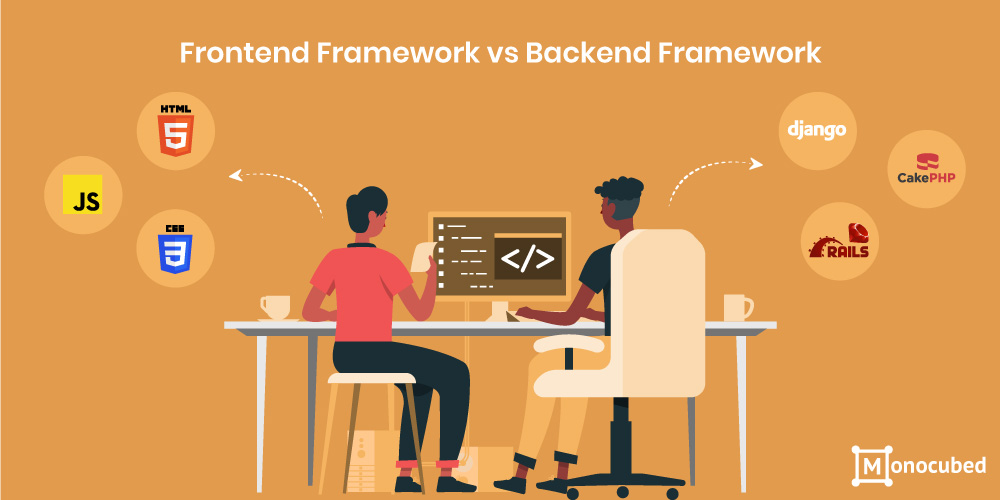
After understanding the different types of frameworks in web development, it becomes crucial to gauge the difference between front-end and back-end.
Frontend developers have to work on the user interface of the site and must possess some skills utilizing design tools, namely, Sketch, Photoshop, or Figma.
JavaScript frontend framework like Angular is used for designing user experiences.
The three prime tools the developers work with are CSS, HTML, and JavaScript. Their chief focus is to creating web pages with a rich user experience, ensuring the layout and design of the pages are consistent until their existence.
Angular, Ember, Vue are some of the most popular frontend development libraries and frameworks.
Backend developers must possess critical thinking skills to facilitate a designing scheme that makes the user interaction easy and responsive. They work with a wide range of libraries, APIs, web services, etc.
They are answerable for the execution of database systems, ensuring appropriate communication between different generating backend functionality and services. Ruby on Rails, Django and Express are some of the most popular backend frameworks.
Top 8 Backend Frameworks To Use For Web Application Development
Backend web frameworks are nothing but the libraries of modules and tools that aid to develop the structure of any site. If you require building a powerful web or app, wouldn’t it seem helpful if certain things are readily available?
The best web framework for backend development is the one that assists the developers to have a good start by eradicating the requirement to develop and configure everything from scratch.
They increase productivity and efficiency by providing code editors, server configurations, debugging and testing tools, pre-coded templates and reusable components.
Below are some of the most used back-end development frameworks written consisting of a variety of vital features.
| Logo | GitHub Stars | GitHub Link | Companies Uses |
|---|---|---|---|
 |
65.4k | Django |
|
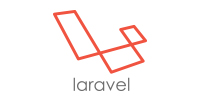 |
70.5k | Laravel |
|
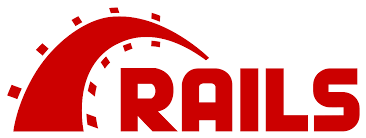 |
51k | Ruby on Rails |
|
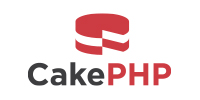 |
8.5k | CakePHP |
|
 |
62.5k | Spring Boot |
|
 |
18.3k | Phoenix |
|
 |
60.1k | Flask |
|
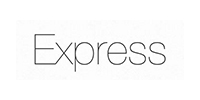 |
57.8k | Express |
|
Django
Django is a high-level framework that is developed with the notion of ‘batteries included’. This means that almost everything any developer would require is already included. Hence, Django does not require the hassle of installing and maintaining third-party plug-ins, as everything functions together. It is ideal for the development of large-scale, database-driven, interactive web applications Django is the best back-end framework for Python as it is highly customizable and scalable. It has extensive community and documentation and facilitates the best web application development framework. The well-known websites created using Django Python are Mozilla, Disqus, Pinterest, National Geographic, to name a few. However, if you are scheduling for building something small, you should use other website backend frameworks. Django will make that small project bloated with needless characteristics.Laravel
Laravel is one of the best backend framework for web development. It has excellent language construction, the capability to suit giant groups and the effectiveness of its advanced toolbox. Based on PHP language, Laravel follows the MVC design architecture. With expressive, elegant syntax, Laravel allows web developers to be flexible and creative while taking care of the background details, unlike other frameworks. The primary aim of Laravel for websites is to create the process of upgrading fun and simple. It is widely preferred by developers owing to its great versatility, highlights, and execution. It empowers its developers to produce an altered base for their web apps. It has a powerful template system and excellent documentation making it one of the most used PHP frameworks today. Some of the companies using Laravel in their tech stack are Kmong, 9GAG, Wisesight, Razorpay.Ruby on Rails
Ruby on Rails is written in the Ruby programming language and is a server-side web application framework. It presents a similar philosophy and design when compared with Django. However, it encourages the usage of patterns like DRY (Don’t Repeat Yourself) and CoC(Convention over Configuration.) Ruby on Rails is a MVC framework (Model-View-Controller) used for having a faultless database table formation, the scaffolding of views, and migrations. It combines Ruby, JavaScript, CSS, and HTML to develop dynamic applications. Ruby on Rails works on the ‘Convention over Configuration (CoC)’ principle that facilitates in making assumptions about what developers require to get the new web application started. This allows web app developers to achieve more while writing fewer codes. Ruby on Rails is one of the most used backend frameworks for the rapid development of prototypes and Minimum Viable Products(MVPs). Furthermore, its easy testing and compilation, along with wide community support and plenty of obtainable resources make it a feasible alternative for beginners. Big companies that use Ruby on Rails are Netflix, Hulu, Shopify, Zendesk, GitHub, to name a few.Want to Test Your Idea Before Investing?
Develop a quick, affordable MVP using Rails to test your web app idea. Book a free consultation and get your idea validated by professionals.
CakePHP
CakePHP is a popular web app development framework introduced in 2005 for PHP development. Since its inception, it has progressed and is now termed as a contemporary web tool, allowing its developers to develop apps quickly. This makes it a preferable choice for developing both big and small web applications. It has no complex configuration to start and renders complete security. CakePHP utilizes some of the well-known engineering concepts and software designs, such as model-view-controller, convention over configuration, association data mapping, front controller, and active record. Its router facilitates multifaceted HTTP app routing, routing incoming requests to the exact controller. Reverse routing forms a relationship between links and routes, making sure that the links are generated with the correct and consistent resource locator.Spring Boot
Spring Boot is one of the widely used open-source JS backend frameworks. This is an inversion of the control container and an application framework for the Java platform. Its core characteristics can be exercised by any Java app, but there are many extensions for developing web applications and websites. Spring Boot has numerous modules that offer a variety of services. It has a spring core container which is the foremost module that provides containers. It renders configurable security methods that maintain an array of protocols, standards, practices, and tools using the Spring security sub-project. Though it does not compel any precise programming model, it has been one of the most popular backend frameworks and an open source in the Java community.Phoenix
Phoenix is the best back end framework that is written in a functional programming language named Elixir. It functions with Erlang’s Virtual Machine and Phoenix uses a server-side MVC pattern. Being based on Plug library and Cowboy Erlang, it was formed to offer high-performing websites. Along with the request-response function, supplied by the Cowboy server, Phoenix renders real-time communication to its external clients via WebSockets utilizing its language channel feature.Flask
Flask is a micro-framework for web development using Python programming language. Flask offers support for secure cookies, Jinja2 templating, RESTful request dispatching, and unit testing. Unlike Django, it is much light weighted and hence, suitable for developing smaller projects. It is described as a microframework as it does not need any particular libraries or tools. It does not contain form validation, database abstraction layer, or other components where third-party libraries give common purposes. However, Flask supports extensions that can insert utilities and features for a well-developed dynamic web application. Extensions do exist for validating forms, object-relational mappers, upload handling, several related tools, and different open authentication technologies. Extensions are restructured far more regularly than the main Flask project. Being such a versatile framework, Flask is used for both large and small-scale websites and apps. LinkedIn and Pinterest are some famous apps using Flask as their backend frameworks.Express
Express is a de facto standard server framework for Node.js, the JavaScript runtime environment and open-source software released under MIT License. This is the best backend web framework for building RESTful APIs, and web and mobile applications. It is termed as the backend section of the MEAN stack, jointly with MongoDB database software and AngularJS. Express supplies a thin layer of primary web application characteristics and is easy to create a vigorous API with the assistance of different HTTP services and middleware accessible. It is considered to be one of the popular web frameworks as it is minimal, flexible and well-suited for development on Node.js. It is considered as one of the major Express components of the mean software bundle. JS developers can use Express and Node.js for developing server-side applications in contrast with Django for Python developers. Companies using Express are MuleSoft, Accenture, Myntra, Uber, Myspace, etc.
Frequently Asked Questions
What is a backend framework?
The backend frameworks are server-side frameworks that are exercised to make tasks hassle-free and convenient for developers. These web app frameworks are focused on scripting languages, namely, Node.js, JavaScript, Ruby, or compiled languages like Java or C#, Java. It also lays focus on business logic and security authorization and authentication.
Is Django for backend?
Django is one of the most preferred Python backend frameworks that formally facilitates four database backends, namely, Oracle, MySQL, PostgreSQL, and SQLite. Django is open-source and a compilation of Python libraries that allows the developers to create robust websites efficiently. It is a full-stack framework and can bee used throughout the entire development process.
Which backend framework is most popular?
From complete MVC frameworks to RESTful APIs, some of the best backend frameworks are Spring, Ruby, Express, Django, and Laravel. Rails and Laravel, being a Model-View-Controller framework help the developers get started with web app development very quickly. Express is considered the fastest backend framework and is used for developing REST APIs and complete applications.
Which is the best framework for developing REST APIs?
The best REST API framework is Express.js, and Django because it incorporates the Django REST framework(DRF). DRF simplifies development of REST APIs and lets you browse your API to see your program in action. But API development is quite flexible and not dependent on any language. We recommend the best API framework for you is the one you are already comfortable using.
Conclusion
There are numerous powerful backend web development frameworks available, each having its imperative traits and features. Selecting the best web frameworks relies on your project specifications and the expertise of a web developer in your team.
It is also important to consider that the tool you opt for is frequently updated to guarantee that it is capable of protecting against new and common attacks.
Still not sure which backend framework to use?
Contact Monocubed for a free consultation. Our team of experts can help you validate your idea and choose the best framework for backend development.
 By Jeel Patel
By Jeel Patel
